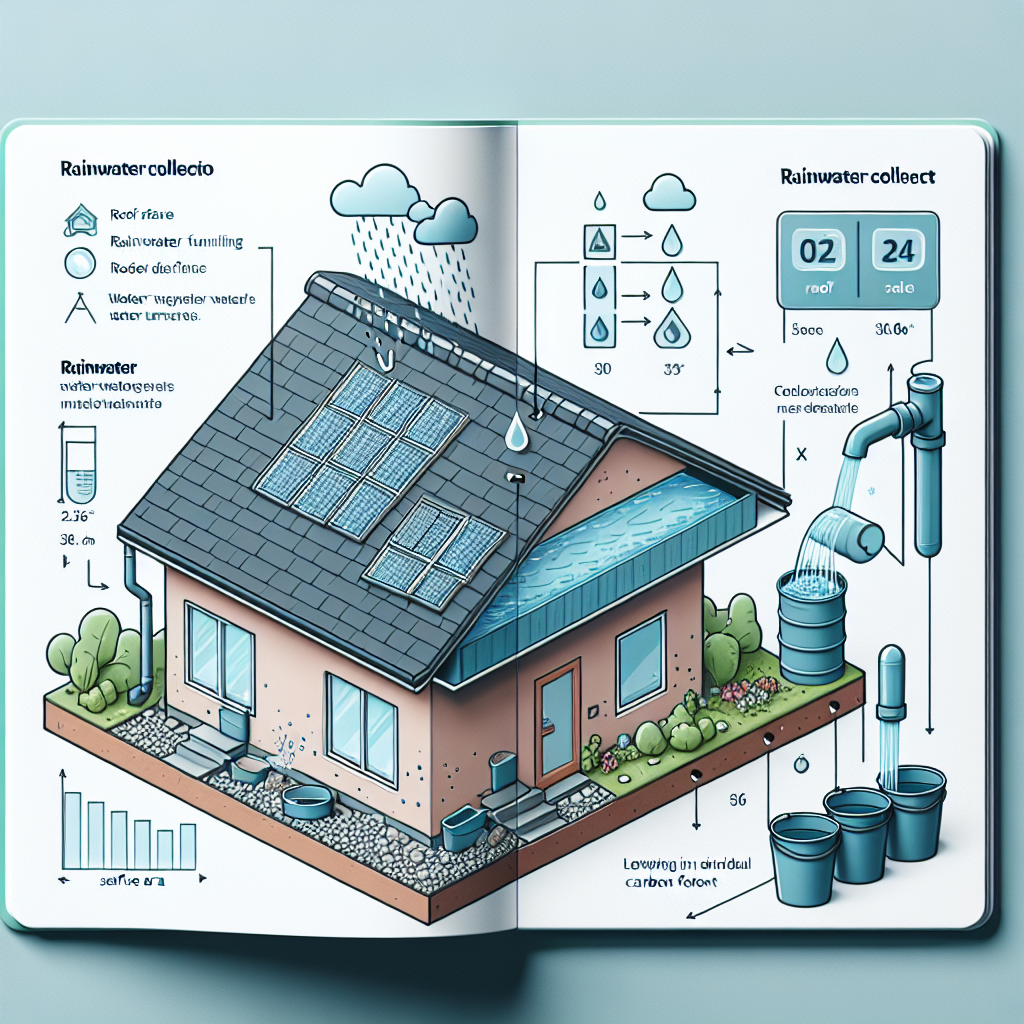Rural Wales is fast becoming a hot destination for those seeking an escape from the city life but looking for the convenience of a modern developed country
“Rural Wales: Your Perfect Escape to Nature with Modern Comforts.”
Hidden Gems: Exploring the Scenic Beauty of Rural Wales
Rural Wales is quickly emerging as a sought-after destination for those yearning to escape the hustle and bustle of city life while still enjoying the comforts of a modern developed country. With its breathtaking landscapes, charming villages, and rich cultural heritage, this region offers a unique blend of tranquility and adventure that is hard to resist. As you venture into the heart of Wales, you’ll discover hidden gems that showcase the stunning beauty and diverse experiences this area has to offer. One of the most captivating aspects of rural Wales is its dramatic scenery. From the rugged mountains of Snowdonia to the serene shores of Pembrokeshire, the natural beauty is simply awe-inspiring. Imagine standing atop Mount Snowdon, the highest peak in Wales, where panoramic views stretch as far as the eye can see. On a clear day, you can spot the shimmering waters of the Irish Sea and the rolling hills that seem to go on forever. This is not just a hike; it’s an experience that connects you with nature in a way that city life rarely allows. As you make your way through the countryside, you’ll stumble upon quaint villages that feel like they’ve been plucked straight from a storybook. Places like Betws-y-Coed and Llangollen are perfect examples of this charm, with their cobbled streets, traditional stone cottages, and friendly locals. These villages often serve as gateways to outdoor adventures, whether it’s hiking, cycling, or simply enjoying a leisurely stroll along the riverbanks. The warm hospitality of the residents adds to the allure, making you feel right at home as you explore. Transitioning from the natural wonders to the cultural treasures, rural Wales is steeped in history and tradition. The region is dotted with ancient castles, such as Caernarfon and Conwy, which tell tales of a bygone era. These majestic structures not only offer a glimpse into the past but also provide stunning backdrops for photographs. Exploring these castles can be a fascinating journey, as you learn about the stories of kings and queens who once roamed these halls. Additionally, local festivals and events celebrate Welsh culture, from traditional music and dance to delicious food fairs, allowing visitors to immerse themselves in the vibrant community spirit. Moreover, the culinary scene in rural Wales is thriving, with an emphasis on locally sourced ingredients. You’ll find cozy pubs and restaurants serving up hearty dishes that reflect the region’s agricultural heritage. Whether it’s a traditional Welsh cawl or fresh seafood from the coast, the flavors are sure to delight your taste buds. Many establishments also offer farm-to-table experiences, where you can savor meals made from ingredients grown just a stone’s throw away. This connection to the land enhances the overall experience, making each meal feel special. As you explore the hidden gems of rural Wales, it becomes clear that this region is more than just a picturesque escape; it’s a place where nature, culture, and community intertwine. The slower pace of life allows for reflection and rejuvenation, making it an ideal destination for those looking to recharge. Whether you’re hiking through the mountains, wandering through charming villages, or indulging in local cuisine, rural Wales invites you to embrace its beauty and warmth. So, if you’re seeking an escape that combines the best of both worlds, look no further than this enchanting corner of the UK.Modern Amenities: How Rural Wales Balances Tradition and Convenience
Rural Wales is quickly emerging as a sought-after destination for those yearning to escape the hustle and bustle of city life while still enjoying the comforts of modern living. Nestled amidst breathtaking landscapes, charming villages, and rich cultural heritage, this region offers a unique blend of tradition and convenience that appeals to a wide range of visitors. As more people seek refuge from urban chaos, they are discovering that Rural Wales provides not only stunning natural beauty but also a surprising array of modern amenities that make life here both enjoyable and practical. One of the most appealing aspects of Rural Wales is its ability to maintain a sense of community while offering the conveniences that modern life demands. Many villages are equipped with essential services such as grocery stores, cafes, and healthcare facilities, ensuring that residents and visitors alike have access to everything they need without having to venture into larger towns or cities. This balance allows individuals to enjoy the tranquility of rural living without sacrificing the comforts they have grown accustomed to in urban environments. Moreover, the region boasts a growing number of co-working spaces and high-speed internet access, making it an attractive option for remote workers and digital nomads. With the rise of flexible working arrangements, many people are now able to choose where they live based on lifestyle preferences rather than job locations. Rural Wales, with its picturesque scenery and peaceful atmosphere, provides an ideal backdrop for productivity. The availability of modern technology means that individuals can stay connected while enjoying the serenity of the countryside, creating a perfect harmony between work and leisure. In addition to practical amenities, Rural Wales is also home to a vibrant food scene that showcases local produce and culinary talent. Farmers’ markets and artisan shops are plentiful, offering fresh, organic ingredients that reflect the region’s agricultural heritage. Many restaurants and cafes pride themselves on sourcing their ingredients locally, providing visitors with a taste of authentic Welsh cuisine. This focus on sustainability and quality not only supports local farmers but also enhances the overall experience for those looking to indulge in the flavors of the region. Furthermore, the area is rich in cultural experiences, with numerous festivals, art galleries, and historical sites that celebrate Welsh heritage. Visitors can immerse themselves in traditional music, dance, and crafts while also enjoying contemporary art and performances. This blend of old and new creates a dynamic cultural landscape that appeals to a diverse audience, making Rural Wales a vibrant place to explore. As more people discover the charm of Rural Wales, the region is also seeing an increase in boutique accommodations and eco-friendly lodgings. From cozy cottages to stylish glamping sites, there are plenty of options for those looking to unwind in nature without sacrificing comfort. These accommodations often incorporate sustainable practices, allowing guests to enjoy their stay while minimizing their environmental impact. In conclusion, Rural Wales is rapidly becoming a haven for those seeking an escape from city life, offering a perfect balance of modern amenities and traditional charm. With its stunning landscapes, thriving local culture, and convenient services, it’s no wonder that more people are choosing to make this beautiful region their home or vacation destination. Whether you’re looking to work remotely, indulge in local cuisine, or simply relax in a picturesque setting, Rural Wales has something to offer everyone, making it an increasingly popular choice for a modern yet tranquil lifestyle.Outdoor Adventures: Activities to Experience in Rural Wales
Rural Wales is quickly gaining a reputation as a go-to destination for those yearning to escape the hustle and bustle of city life while still enjoying the comforts of a modern developed country. With its breathtaking landscapes, rich history, and vibrant culture, it’s no wonder that outdoor enthusiasts are flocking to this picturesque region. If you’re looking for an adventure that combines stunning scenery with a variety of activities, Rural Wales has something for everyone. One of the most popular activities in this beautiful area is hiking. With an extensive network of trails, ranging from gentle walks to challenging climbs, there’s a path for every skill level. The iconic Snowdonia National Park is a must-visit for hikers, offering routes that lead to the summit of Mount Snowdon, the highest peak in Wales. As you ascend, you’ll be treated to panoramic views that stretch for miles, making every step worth the effort. For those who prefer a more leisurely stroll, the coastal paths along the Pembrokeshire Coast National Park provide stunning views of rugged cliffs and sandy beaches, perfect for a relaxing day out. In addition to hiking, cycling is another fantastic way to explore the rural landscape. The region boasts numerous cycling routes, from scenic country lanes to challenging mountain trails. The Lon Las Cymru, a long-distance cycle route, takes you through some of the most beautiful parts of Wales, allowing you to experience the diverse terrain at your own pace. Whether you’re a seasoned cyclist or just looking for a fun day out with the family, cycling in Rural Wales is an exhilarating way to soak in the fresh air and stunning surroundings. For those who crave a bit more adrenaline, adventure sports are abundant in this part of the world. From rock climbing and abseiling to white-water rafting and coasteering, there’s no shortage of thrilling activities to get your heart racing. The Ogwen Valley is a popular spot for climbers, offering a range of routes that cater to all abilities. Meanwhile, the rivers of North Wales provide excellent opportunities for kayaking and rafting, where you can navigate through exhilarating rapids while surrounded by breathtaking scenery. If you’re looking to connect with nature in a more tranquil way, birdwatching and wildlife spotting are also rewarding activities in Rural Wales. The region is home to a diverse range of wildlife, including red kites, otters, and even dolphins along the coast. The RSPB reserves, such as the one at Ynys-hir, offer excellent opportunities for birdwatching, with well-maintained hides and trails that allow you to observe these magnificent creatures in their natural habitat. As the sun sets, the outdoor adventures don’t have to end. Stargazing in Rural Wales is a magical experience, thanks to the low levels of light pollution in many areas. The Brecon Beacons National Park is recognized as a Dark Sky Reserve, making it an ideal spot for those looking to marvel at the night sky. Grab a blanket, find a cozy spot, and let the beauty of the cosmos take your breath away. In conclusion, Rural Wales is a treasure trove of outdoor adventures waiting to be discovered. Whether you’re hiking through majestic mountains, cycling along scenic routes, or engaging in thrilling sports, the region offers a perfect blend of excitement and tranquility. So, if you’re seeking an escape from city life while still enjoying the conveniences of modern living, look no further than the stunning landscapes and vibrant activities that Rural Wales has to offer.How to calculate how much rainwater can be collected from your roof and how rainwater collection is vital to reducing your carbon footprint
Calculating Rainwater Harvesting Potential from Your Roof
Calculating the potential for rainwater harvesting from your roof is an empowering step toward sustainability and environmental stewardship. To begin, it is essential to understand the basic principles of rainwater collection. The amount of rainwater you can harvest depends on several factors, including the size of your roof, the average rainfall in your area, and the efficiency of your collection system. By grasping these elements, you can make informed decisions that contribute to reducing your carbon footprint. First, measure the area of your roof. This can be done by calculating the length and width of your roof and multiplying these dimensions. For example, if your roof is 20 feet long and 15 feet wide, the total area would be 300 square feet. Next, consider the average annual rainfall in your region. This information can typically be found through local weather services or online databases. For instance, if your area receives an average of 30 inches of rain per year, you can convert this measurement into feet, which would be 2.5 feet. Now, to calculate the potential rainwater collection, you can use a simple formula: multiply the area of your roof by the average annual rainfall. In our example, 300 square feet multiplied by 2.5 feet of rainfall equals 750 cubic feet of water. Since one cubic foot of water is equivalent to approximately 7.48 gallons, you can further convert this figure into gallons. Thus, 750 cubic feet translates to about 5,610 gallons of rainwater that could potentially be harvested from your roof each year. However, it is important to consider the efficiency of your rainwater collection system. Not all the rainwater that falls on your roof will be collected due to factors such as evaporation, splashing, and the design of your gutters and downspouts. A well-designed system can typically capture around 80% to 90% of the rainwater. Therefore, if we take the previous example of 5,610 gallons, you might realistically expect to collect between 4,488 and 5,049 gallons annually. Understanding how much rainwater you can collect is not just a mathematical exercise; it is a vital step toward embracing a more sustainable lifestyle. By utilizing rainwater for irrigation, flushing toilets, or even washing clothes, you can significantly reduce your reliance on municipal water supplies. This shift not only conserves water but also lessens the energy required for water treatment and distribution, thereby reducing your overall carbon footprint. Moreover, rainwater harvesting can contribute to stormwater management, helping to mitigate flooding and erosion in your community. By capturing rainwater, you are not only benefiting your household but also playing a role in protecting local ecosystems. This interconnectedness highlights the importance of individual actions in the broader context of environmental health. In conclusion, calculating the potential for rainwater harvesting from your roof is a straightforward yet impactful process. By understanding the size of your roof, the average rainfall in your area, and the efficiency of your collection system, you can estimate how much rainwater you can collect. This knowledge empowers you to make sustainable choices that contribute to a healthier planet. As you embark on this journey, remember that every drop counts, and your efforts can inspire others to follow suit, creating a ripple effect of positive change in your community and beyond.Benefits of Rainwater Collection for Environmental Sustainability

Rainwater collection is an increasingly popular practice that offers numerous benefits for environmental sustainability, making it a vital component in the fight against climate change. By harnessing the natural resource of rain, individuals and communities can significantly reduce their reliance on municipal water supplies, thereby conserving precious freshwater resources. This practice not only alleviates the strain on local water systems but also promotes a more sustainable approach to water management. One of the most compelling advantages of rainwater collection is its ability to mitigate urban flooding. As cities expand and impervious surfaces increase, rainwater has fewer places to go, leading to overwhelming stormwater runoff. This runoff can cause erosion, water pollution, and even damage to infrastructure. By capturing rainwater from rooftops, we can reduce the volume of water that enters storm drains, thus minimizing the risk of flooding and protecting our urban environments. This proactive approach not only safeguards our communities but also enhances the resilience of our ecosystems. Moreover, rainwater harvesting contributes to groundwater recharge. When rainwater is collected and stored, it can be used for irrigation or other non-potable purposes, allowing the groundwater table to recover. This is particularly important in areas experiencing drought or water scarcity, where groundwater serves as a critical resource. By utilizing rainwater, we can help maintain the balance of our natural water systems, ensuring that both surface and groundwater resources remain sustainable for future generations. In addition to these environmental benefits, rainwater collection can also lead to significant cost savings for households and businesses. By reducing dependence on municipal water supplies, individuals can lower their water bills and decrease the demand for treated water, which is often energy-intensive to produce. This reduction in energy consumption not only saves money but also decreases greenhouse gas emissions associated with water treatment and distribution. As a result, rainwater harvesting becomes a practical solution that aligns economic benefits with environmental responsibility. Furthermore, rainwater collection systems can be designed to be aesthetically pleasing and integrated into landscaping, enhancing the beauty of properties while promoting sustainability. Rain gardens, cisterns, and decorative barrels can serve as functional elements that capture rainwater while also providing visual appeal. This integration of nature and technology fosters a deeper connection to the environment, inspiring individuals to take an active role in conservation efforts. As we consider the broader implications of rainwater collection, it becomes clear that this practice is not merely a personal choice but a collective responsibility. By adopting rainwater harvesting systems, we contribute to a culture of sustainability that encourages others to follow suit. Each drop collected represents a step toward reducing our carbon footprint and promoting environmental stewardship. In a world facing the challenges of climate change, water scarcity, and habitat degradation, every action counts. In conclusion, the benefits of rainwater collection extend far beyond individual households. By embracing this practice, we can collectively work towards a more sustainable future, one where our natural resources are preserved, our communities are resilient, and our impact on the planet is minimized. As we look to the future, let us be inspired by the potential of rainwater harvesting to transform our relationship with water and foster a healthier, more sustainable world for generations to come.
Steps to Maximize Rainwater Collection Efficiency and Reduce Carbon Footprint
Calculating the amount of rainwater that can be collected from your roof is an essential step in maximizing efficiency and reducing your carbon footprint. To begin, it is crucial to understand the basic principles of rainwater harvesting. The first step involves measuring the area of your roof, which can be done by calculating the length and width of each section and then multiplying these dimensions. Once you have the total square footage, you can estimate the potential volume of rainwater that can be collected. This is achieved by considering the average annual rainfall in your area, which can typically be found through local meteorological data. By multiplying the roof area by the average rainfall, you can determine the total volume of water that could potentially be harvested. However, simply knowing the potential volume is not enough; maximizing the efficiency of your rainwater collection system is equally important. One effective way to enhance collection is by ensuring that your roof is clean and free from debris. Leaves, dirt, and other materials can obstruct the flow of water into your collection system, leading to significant losses. Regular maintenance, such as cleaning gutters and downspouts, will help ensure that every drop of rain is captured. Additionally, installing a first-flush diverter can significantly improve water quality by diverting the initial runoff, which often contains contaminants from the roof. Moreover, the type of collection system you choose plays a vital role in efficiency. Rain barrels are a popular option for smaller homes, while larger systems may require cisterns or underground tanks. When selecting a system, consider the size of your roof and the amount of rainfall you typically receive. It is also beneficial to incorporate a filtration system to ensure that the collected water is clean and safe for use in irrigation or other non-potable applications. By investing in a high-quality filtration system, you can further enhance the usability of your collected rainwater. In addition to these practical steps, it is essential to consider the broader impact of rainwater collection on your carbon footprint. By utilizing rainwater for irrigation, you reduce the demand for municipal water, which often requires significant energy for treatment and distribution. This reduction in water usage not only conserves a precious resource but also decreases the energy consumption associated with water supply systems. Furthermore, using rainwater for landscaping and gardening can lead to healthier plants, as rainwater is typically free from the chemicals found in treated water. As you embark on this journey of rainwater collection, it is important to remember that every small action contributes to a larger goal of sustainability. By maximizing the efficiency of your rainwater collection system, you are not only making a positive impact on your immediate environment but also inspiring others to consider similar practices. Sharing your experiences and knowledge with friends and neighbors can create a ripple effect, encouraging a community-wide commitment to reducing carbon footprints. In conclusion, calculating and maximizing rainwater collection from your roof is a powerful way to contribute to environmental sustainability. By understanding the potential volume of rainwater, maintaining your collection system, and recognizing the broader implications of your actions, you can play a significant role in reducing your carbon footprint. Embracing rainwater harvesting is not just a practical solution; it is an inspiring step toward a more sustainable future for our planet.Lifestyle Medicine is driving change in how people look after their health
Lifestyle Medicine: Transforming Health Through Nutrition
Lifestyle medicine is increasingly recognized as a powerful approach to health and wellness, particularly through the lens of nutrition. As more people become aware of the profound impact that food choices have on their overall health, the conversation around nutrition is evolving. This shift is not just about dieting or weight loss; it’s about understanding how the foods we consume can either nourish or harm our bodies. By embracing lifestyle medicine, individuals are discovering that they have the power to influence their health outcomes through informed dietary choices. At the heart of lifestyle medicine is the idea that prevention is better than cure. Rather than waiting for health issues to arise, this approach encourages proactive measures to maintain well-being. Nutrition plays a pivotal role in this preventive strategy. For instance, a diet rich in whole foods—fruits, vegetables, whole grains, lean proteins, and healthy fats—can significantly reduce the risk of chronic diseases such as heart disease, diabetes, and certain cancers. By focusing on nutrient-dense foods, individuals can enhance their immune systems, improve their energy levels, and promote overall vitality. Moreover, the conversation around nutrition is becoming more inclusive and personalized. People are beginning to understand that there is no one-size-fits-all approach to eating. Factors such as genetics, lifestyle, and personal preferences all play a role in determining what constitutes a healthy diet for each individual. This realization has led to a growing interest in tailored nutrition plans that cater to specific health needs and goals. For example, someone with a family history of diabetes may benefit from a diet low in refined sugars and high in fiber, while another person may focus on anti-inflammatory foods to manage chronic pain. In addition to individual health benefits, the principles of lifestyle medicine are also fostering a sense of community and shared responsibility. As more people adopt healthier eating habits, they often inspire those around them to do the same. This ripple effect can lead to a collective shift in dietary norms, encouraging families, friends, and even entire communities to prioritize nutrition. Cooking classes, community gardens, and local farmers’ markets are just a few examples of how people are coming together to support healthier lifestyles. These initiatives not only promote better eating habits but also strengthen social bonds and enhance mental well-being. Furthermore, the rise of technology and social media has made it easier than ever to access information about nutrition and healthy living. Online platforms provide a wealth of resources, from recipes and meal plans to expert advice and success stories. This accessibility empowers individuals to take charge of their health and make informed decisions about their diets. As people share their journeys and experiences, they create a supportive environment that encourages others to explore the benefits of lifestyle medicine. In conclusion, lifestyle medicine is transforming the way we approach health, with nutrition at its core. By emphasizing the importance of whole, nutrient-rich foods and fostering a sense of community, this approach is driving meaningful change in how individuals care for their health. As more people recognize the power of their food choices, we can expect to see a continued shift towards healthier lifestyles, ultimately leading to improved well-being for individuals and communities alike. The journey toward better health is not just a personal endeavor; it’s a collective movement that holds the promise of a brighter, healthier future for all.The Role of Physical Activity in Lifestyle Medicine

In recent years, the concept of lifestyle medicine has gained significant traction, reshaping how individuals approach their health and well-being. At the heart of this movement lies the critical role of physical activity, which serves as a cornerstone for improving overall health outcomes. As we delve into the importance of physical activity within lifestyle medicine, it becomes clear that engaging in regular exercise is not merely a recommendation but a vital component of a holistic approach to health. To begin with, physical activity is essential for maintaining a healthy weight, which is increasingly important in a world where obesity rates are on the rise. Engaging in regular exercise helps to burn calories, build muscle, and boost metabolism, all of which contribute to weight management. However, the benefits of physical activity extend far beyond just weight control. Research has consistently shown that regular exercise can reduce the risk of chronic diseases such as heart disease, diabetes, and certain types of cancer. This is where lifestyle medicine shines, as it emphasizes prevention through healthy habits rather than solely relying on medication to manage health issues. Moreover, physical activity plays a significant role in mental health. In our fast-paced, often stressful lives, finding ways to manage stress and anxiety is crucial. Exercise has been shown to release endorphins, the body’s natural mood lifters, which can help alleviate feelings of depression and anxiety. Additionally, engaging in physical activity can improve sleep quality, leading to better overall mental well-being. This connection between physical activity and mental health underscores the importance of a comprehensive approach to health that lifestyle medicine advocates. Transitioning from mental health, it’s also important to consider the social aspects of physical activity. Many people find that exercising in groups or with friends not only makes the experience more enjoyable but also fosters a sense of community and support. This social interaction can be incredibly motivating, encouraging individuals to stick with their exercise routines. In this way, lifestyle medicine promotes not just individual health but also the strengthening of social bonds, which are essential for emotional well-being. Furthermore, the accessibility of physical activity is a key factor in its role within lifestyle medicine. Unlike some medical interventions that may require significant resources or specialized knowledge, exercise can be adapted to fit various lifestyles and preferences. Whether it’s a brisk walk in the park, a dance class, or a home workout, there are countless ways to incorporate physical activity into daily life. This adaptability makes it easier for individuals to find an exercise routine that resonates with them, ultimately leading to more sustainable health practices. As we continue to explore the impact of lifestyle medicine, it becomes increasingly evident that physical activity is not just a recommendation but a necessity for a healthier life. By prioritizing exercise, individuals can take proactive steps toward preventing chronic diseases, enhancing mental health, and fostering social connections. In this way, lifestyle medicine is driving a transformative change in how people look after their health, encouraging a shift from reactive to proactive care. Ultimately, embracing physical activity as a fundamental aspect of daily life can lead to a more vibrant, fulfilling existence, highlighting the profound impact that lifestyle choices have on our overall well-being.
Mental Well-Being and Lifestyle Medicine: A Holistic Approach
In recent years, the concept of lifestyle medicine has gained significant traction, particularly in the realm of mental well-being. This approach emphasizes the importance of daily habits and lifestyle choices in promoting not only physical health but also mental resilience and emotional stability. As we delve into this holistic perspective, it becomes clear that mental well-being is intricately linked to various lifestyle factors, including nutrition, physical activity, sleep, and stress management. To begin with, nutrition plays a pivotal role in mental health. Research has shown that a balanced diet rich in whole foods, such as fruits, vegetables, whole grains, and lean proteins, can positively influence mood and cognitive function. For instance, omega-3 fatty acids, commonly found in fish, have been linked to reduced symptoms of depression and anxiety. By making conscious dietary choices, individuals can nourish their brains and support their emotional health. Moreover, the gut-brain connection highlights how our digestive health can impact our mental state. A diet that promotes a healthy gut microbiome can lead to improved mood and reduced stress levels, illustrating the profound interplay between what we eat and how we feel. In addition to nutrition, physical activity is another cornerstone of lifestyle medicine that significantly contributes to mental well-being. Engaging in regular exercise has been shown to release endorphins, the body’s natural mood lifters. Whether it’s a brisk walk, a yoga session, or a high-intensity workout, moving our bodies can alleviate symptoms of anxiety and depression. Furthermore, exercise provides an opportunity for social interaction, which is essential for emotional health. Group classes or team sports can foster a sense of community and belonging, further enhancing our mental resilience. Sleep, often overlooked, is another critical component of mental well-being. Quality sleep is essential for cognitive function, emotional regulation, and overall health. Unfortunately, many people struggle with sleep issues due to stress, poor sleep hygiene, or lifestyle choices. By prioritizing sleep and establishing a consistent sleep routine, individuals can improve their mental clarity and emotional stability. Simple practices, such as creating a calming bedtime environment and limiting screen time before bed, can make a significant difference in sleep quality. Stress management is perhaps one of the most vital aspects of lifestyle medicine when it comes to mental well-being. Chronic stress can lead to a myriad of health issues, both mental and physical. Therefore, incorporating stress-reducing techniques into daily life is essential. Mindfulness practices, such as meditation and deep-breathing exercises, can help individuals cultivate a sense of calm and presence. Additionally, engaging in hobbies or activities that bring joy can serve as a powerful antidote to stress. Whether it’s painting, gardening, or playing an instrument, these pursuits can provide a much-needed escape and foster a sense of fulfillment. Ultimately, the holistic approach of lifestyle medicine recognizes that mental well-being is not merely the absence of mental illness but a state of flourishing that encompasses emotional, psychological, and social health. By focusing on nutrition, physical activity, sleep, and stress management, individuals can take proactive steps toward enhancing their mental well-being. As more people embrace this comprehensive approach, we are likely to see a shift in how society views health, moving away from a reactive model to one that prioritizes prevention and holistic care. In this evolving landscape, lifestyle medicine is not just a trend; it is a transformative movement that empowers individuals to take charge of their health and well-being.Why are natural foods locally sourced popular in rural areas?
Health Benefits of Locally Sourced Natural Foods
The growing popularity of locally sourced natural foods in rural areas can be attributed to a myriad of health benefits that resonate deeply with the values and lifestyles of these communities. One of the primary advantages of consuming locally sourced foods is the enhanced nutritional quality they often possess. Foods that are grown and harvested close to home tend to be fresher, as they do not undergo the lengthy transportation processes that can diminish their nutritional value. This freshness is particularly significant for fruits and vegetables, which can lose vital nutrients over time. Consequently, rural residents who prioritize local produce are more likely to consume foods that are rich in vitamins, minerals, and antioxidants, contributing to overall better health. Moreover, the consumption of locally sourced natural foods can lead to a more balanced diet. Rural areas often have access to a diverse array of seasonal produce, which encourages residents to incorporate a variety of foods into their meals. This seasonal eating not only supports a balanced intake of nutrients but also fosters a deeper connection to the land and its cycles. By embracing the natural rhythms of local agriculture, individuals can cultivate a greater appreciation for the foods they consume, which can lead to healthier eating habits over time. In addition to the nutritional benefits, locally sourced foods are often free from the preservatives and artificial ingredients that are commonly found in mass-produced items. Many local farmers prioritize organic and sustainable farming practices, which means that their products are less likely to contain harmful chemicals. This aspect is particularly appealing to health-conscious consumers who are increasingly aware of the potential risks associated with synthetic additives. By choosing natural foods that are grown without these chemicals, rural residents can reduce their exposure to toxins, thereby promoting better health outcomes. Furthermore, the act of supporting local farmers and producers can have a positive psychological impact on individuals in rural communities. When people purchase food directly from local sources, they often feel a sense of community and connection to the land. This connection can enhance mental well-being, as it fosters a sense of belonging and purpose. Additionally, knowing where one’s food comes from can instill a greater sense of trust in the food supply, alleviating concerns about food safety and quality. This trust is particularly important in an era where foodborne illnesses and contamination have become pressing issues. Transitioning from the individual to the community level, the health benefits of locally sourced natural foods extend beyond personal well-being. When rural areas prioritize local agriculture, they contribute to the overall health of their communities. Local food systems can stimulate economic growth, create jobs, and promote sustainable practices that benefit the environment. As rural residents invest in their local food economy, they not only enhance their own health but also contribute to the resilience and vitality of their communities. In conclusion, the health benefits of locally sourced natural foods are multifaceted, encompassing nutritional quality, reduced exposure to harmful substances, and enhanced community well-being. As rural areas continue to embrace these foods, they not only improve individual health outcomes but also foster a sense of community and sustainability. This holistic approach to food consumption underscores the importance of supporting local agriculture, ultimately leading to healthier individuals and stronger communities. The trend towards locally sourced natural foods is not merely a dietary choice; it is a lifestyle that promotes health, well-being, and a deeper connection to the land.Economic Impact on Rural Communities

The economic impact of locally sourced natural foods on rural communities is profound and multifaceted, contributing significantly to the sustainability and vitality of these areas. As consumers increasingly prioritize health and environmental concerns, the demand for natural foods has surged, leading to a revitalization of local economies. This trend not only supports local farmers but also fosters a sense of community and encourages the development of small businesses. One of the primary benefits of sourcing natural foods locally is the direct financial support it provides to local farmers. By purchasing produce, meats, and dairy products from nearby agricultural operations, consumers help ensure that their money remains within the community. This financial circulation is crucial for rural economies, where job opportunities may be limited. When local farmers thrive, they are more likely to reinvest in their operations, hire additional staff, and contribute to the local tax base, thereby enhancing public services and infrastructure. Moreover, the rise of farmers’ markets and community-supported agriculture (CSA) programs has created new avenues for income generation. These platforms not only allow farmers to sell their products directly to consumers but also foster relationships between producers and buyers. Such interactions can lead to increased consumer loyalty and a greater appreciation for the value of locally grown food. As a result, rural communities experience a boost in economic activity, as these markets often attract visitors from surrounding areas, further stimulating local businesses such as restaurants, shops, and service providers. In addition to direct sales, the popularity of natural foods has spurred the growth of agritourism in rural regions. This form of tourism encourages visitors to engage with local farms, participate in harvest activities, and learn about sustainable agricultural practices. By showcasing the unique offerings of rural areas, agritourism not only generates additional revenue for farmers but also promotes the region as a destination for those seeking authentic experiences. This influx of visitors can lead to increased spending in local accommodations, dining establishments, and recreational activities, thereby diversifying the economic base of rural communities. Furthermore, the emphasis on locally sourced natural foods aligns with broader trends in sustainability and environmental stewardship. As consumers become more aware of the environmental impact of their food choices, they are increasingly drawn to products that are grown and produced in an ecologically responsible manner. This shift encourages farmers to adopt sustainable practices, which can lead to improved soil health, reduced pesticide use, and enhanced biodiversity. In turn, these practices contribute to the long-term viability of local agriculture, ensuring that rural communities can continue to thrive economically while preserving their natural resources. The economic impact of locally sourced natural foods extends beyond immediate financial benefits; it also fosters a sense of pride and identity within rural communities. As residents come together to support local agriculture, they cultivate a shared commitment to their region’s health and prosperity. This collective effort can lead to increased civic engagement, as community members collaborate on initiatives that promote local food systems, sustainability, and economic resilience. In conclusion, the popularity of locally sourced natural foods in rural areas has far-reaching economic implications. By supporting local farmers, fostering small businesses, and promoting sustainable practices, these food choices contribute to the overall vitality of rural communities. As the demand for natural foods continues to grow, it is essential to recognize and nurture the interconnectedness of local agriculture and community well-being, ensuring that rural areas remain vibrant and economically sustainable for generations to come.
Environmental Sustainability of Local Food Systems
The increasing popularity of natural foods sourced locally in rural areas can be attributed to a variety of factors, with environmental sustainability standing out as a primary concern. As communities become more aware of the ecological impact of their food choices, the shift towards local food systems has gained momentum. This trend is not merely a passing fad; rather, it reflects a deeper understanding of the interconnectedness between food production, environmental health, and community well-being. One of the most significant advantages of locally sourced natural foods is the reduction in carbon emissions associated with transportation. When food is grown and consumed within the same region, the need for long-distance shipping diminishes considerably. This not only lessens the carbon footprint but also reduces the reliance on fossil fuels, which are often used in the transportation of goods over vast distances. Consequently, rural communities that prioritize local food systems contribute to a decrease in greenhouse gas emissions, thereby playing a vital role in combating climate change. Moreover, local food systems often promote biodiversity, which is essential for maintaining healthy ecosystems. When farmers focus on growing a variety of crops suited to their local environment, they help preserve genetic diversity and protect against the risks associated with monoculture farming. This practice not only enhances soil health but also supports a wider range of wildlife, including pollinators that are crucial for food production. By fostering biodiversity, rural areas can create resilient agricultural systems that are better equipped to withstand environmental challenges such as pests, diseases, and changing climate conditions. In addition to promoting biodiversity, locally sourced natural foods often utilize sustainable farming practices that prioritize soil health and water conservation. Many local farmers adopt organic or regenerative agricultural methods, which emphasize the importance of maintaining healthy soil through practices such as crop rotation, cover cropping, and reduced chemical inputs. These methods not only enhance the quality of the food produced but also contribute to the long-term sustainability of the land. As a result, rural communities that support local food systems are investing in the health of their environment for future generations. Furthermore, the economic benefits of local food systems cannot be overlooked. By purchasing from local farmers, consumers are not only supporting their local economy but also encouraging sustainable agricultural practices. This creates a positive feedback loop where the demand for natural foods incentivizes farmers to adopt environmentally friendly practices. As local economies thrive, rural areas can become more self-sufficient, reducing their dependence on external food sources that may not align with their sustainability goals. Transitioning to local food systems also fosters a sense of community and connection among residents. When people know where their food comes from and who produces it, they are more likely to appreciate the value of sustainable practices. This awareness can lead to increased advocacy for environmental stewardship and a collective commitment to preserving the local ecosystem. In this way, the popularity of natural foods sourced locally in rural areas is not just about individual choices; it is about building a community that prioritizes environmental sustainability. In conclusion, the environmental sustainability of local food systems is a compelling reason for their popularity in rural areas. By reducing carbon emissions, promoting biodiversity, utilizing sustainable farming practices, and strengthening local economies, these systems contribute to a healthier planet. As communities continue to embrace the benefits of locally sourced natural foods, they are not only nourishing themselves but also nurturing the environment for generations to come.Why new home owners in the Yorkshire choosing organic fabrics to furnish their homes
Health Benefits of Organic Fabrics for New Homeowners
As new homeowners in Yorkshire embark on the journey of furnishing their spaces, an increasing number are gravitating towards organic fabrics. This trend is not merely a reflection of aesthetic preferences; it is deeply rooted in the health benefits that organic materials offer. Understanding these advantages can illuminate why many are making this conscientious choice for their homes. To begin with, organic fabrics are produced without the use of harmful chemicals, pesticides, or synthetic fertilizers. This absence of toxic substances is particularly significant for new homeowners, as many are keen to create a safe and healthy environment for themselves and their families. Traditional textiles often contain residues from these chemicals, which can lead to indoor air pollution and various health issues. By opting for organic fabrics, homeowners can significantly reduce their exposure to these harmful agents, thereby fostering a healthier living space. Moreover, organic fabrics are typically made from natural fibers such as cotton, linen, and wool, which are not only biodegradable but also less likely to irritate the skin. For families with young children or individuals with sensitivities, this is a crucial consideration. The softness and breathability of organic materials contribute to a more comfortable living environment, minimizing the risk of allergic reactions and skin irritations. As new homeowners settle into their spaces, the comfort and well-being of their loved ones often take precedence, making organic fabrics an appealing choice. In addition to their health benefits, organic fabrics also promote better indoor air quality. Conventional textiles can emit volatile organic compounds (VOCs), which are known to contribute to respiratory problems and other health concerns. In contrast, organic materials are less likely to release these harmful compounds, thus enhancing the overall air quality within the home. This is particularly important in Yorkshire, where the climate can lead to homes being sealed tightly for warmth. Improved air quality not only benefits physical health but also contributes to mental well-being, creating a more serene and inviting atmosphere. Furthermore, the sustainability aspect of organic fabrics cannot be overlooked. New homeowners are increasingly aware of their environmental footprint and are seeking ways to make eco-friendly choices. Organic textiles are produced through sustainable farming practices that prioritize soil health and biodiversity. By choosing these materials, homeowners are not only investing in their health but also supporting environmentally responsible practices. This alignment with personal values can enhance the satisfaction derived from their home environment, fostering a sense of pride in their choices. Transitioning to organic fabrics also encourages a more mindful approach to consumption. Many new homeowners are opting for quality over quantity, recognizing that investing in durable, sustainable materials can lead to long-term benefits. This shift in mindset promotes a lifestyle that values health, sustainability, and ethical consumption, which resonates deeply with the values of many individuals today. In conclusion, the growing preference for organic fabrics among new homeowners in Yorkshire is driven by a multitude of health benefits. From reducing exposure to harmful chemicals and improving indoor air quality to promoting comfort and sustainability, these materials offer a holistic approach to home furnishing. As individuals seek to create nurturing environments for themselves and their families, the choice of organic fabrics stands out as a significant step towards achieving a healthier, more sustainable lifestyle.Environmental Impact of Choosing Organic Materials

In recent years, an increasing number of new homeowners in Yorkshire have begun to prioritize the use of organic fabrics when furnishing their homes. This shift towards organic materials is not merely a trend; it reflects a growing awareness of the environmental impact associated with traditional fabric production. By choosing organic fabrics, homeowners are making a conscious decision to support sustainable practices that benefit both the planet and their living spaces. One of the primary reasons for this shift is the significant environmental footprint of conventional textile manufacturing. Traditional fabrics often involve the use of synthetic fibers, which are derived from petroleum-based products. The extraction and processing of these materials contribute to pollution and greenhouse gas emissions, exacerbating climate change. In contrast, organic fabrics are typically made from natural fibers such as cotton, linen, or hemp, which are cultivated without the use of harmful pesticides or synthetic fertilizers. This organic cultivation not only reduces the chemical load on the environment but also promotes biodiversity and healthier ecosystems. Moreover, the production of organic fabrics tends to consume less water compared to conventional methods. For instance, organic cotton farming employs practices that enhance soil health and water retention, thereby minimizing the need for irrigation. This is particularly important in the context of climate change, where water scarcity is becoming an increasingly pressing issue. By opting for organic materials, homeowners in Yorkshire are not only making a choice that aligns with their values but are also contributing to the conservation of vital natural resources. In addition to the environmental benefits, organic fabrics often boast superior quality and durability. Homeowners are increasingly recognizing that investing in high-quality materials can lead to long-term savings, as organic fabrics tend to withstand wear and tear better than their conventional counterparts. This durability is a result of the natural production processes that prioritize the integrity of the fibers, leading to products that are not only aesthetically pleasing but also functional and resilient. Consequently, new homeowners are finding that organic fabrics provide a sustainable solution that enhances the overall quality of their living spaces. Furthermore, the aesthetic appeal of organic fabrics cannot be overlooked. With a wide range of colors, textures, and patterns available, these materials offer versatility that can complement various interior design styles. Homeowners are drawn to the natural look and feel of organic fabrics, which can create a warm and inviting atmosphere in their homes. This connection to nature is particularly significant in Yorkshire, where the stunning landscapes and rich agricultural heritage inspire a desire for interiors that reflect the beauty of the surrounding environment. As awareness of environmental issues continues to grow, the choice of organic fabrics is becoming a defining characteristic of conscientious living. New homeowners in Yorkshire are increasingly motivated by a desire to reduce their ecological footprint and support sustainable practices. By selecting organic materials for their furnishings, they are not only enhancing their homes but also contributing to a larger movement towards environmental stewardship. This choice signifies a commitment to a healthier planet, demonstrating that even small decisions in home furnishing can have a profound impact on the world around us. Ultimately, the trend towards organic fabrics represents a harmonious blend of style, sustainability, and social responsibility, making it a compelling choice for those looking to furnish their homes thoughtfully.
Aesthetic Appeal of Organic Fabrics in Yorkshire Homes
In recent years, an increasing number of new homeowners in Yorkshire have gravitated towards organic fabrics to furnish their living spaces, a trend that reflects a broader shift towards sustainability and health-conscious living. The aesthetic appeal of organic fabrics plays a significant role in this movement, as these materials not only enhance the visual charm of a home but also contribute to a more environmentally friendly lifestyle. As homeowners seek to create inviting and stylish interiors, the natural beauty of organic fabrics becomes a compelling choice. One of the primary reasons for the aesthetic allure of organic fabrics lies in their inherent textures and colors. Unlike conventional textiles, which often undergo extensive chemical processing, organic fabrics are derived from natural fibers such as cotton, linen, and hemp. These materials retain their original qualities, resulting in a softness and warmth that synthetic alternatives often lack. The tactile experience of organic fabrics can transform a space, inviting touch and interaction, which is particularly appealing in a home setting where comfort is paramount. Moreover, the color palette of organic fabrics tends to be more subdued and earthy, reflecting the natural world. Homeowners in Yorkshire, known for their appreciation of the region’s stunning landscapes, often find that these organic hues resonate with their surroundings. The muted tones of organic textiles can seamlessly blend with the rustic charm of Yorkshire’s architecture, creating a harmonious balance between indoor and outdoor environments. This connection to nature not only enhances the aesthetic appeal of a home but also fosters a sense of tranquility and well-being. In addition to their visual and tactile qualities, organic fabrics offer versatility in design. Whether homeowners prefer a minimalist aesthetic or a more eclectic style, organic textiles can be easily integrated into various decor themes. For instance, organic cotton cushions can add a touch of comfort to a modern sofa, while linen curtains can evoke a sense of elegance in a traditional setting. This adaptability allows homeowners to express their personal style while remaining committed to sustainable choices. Furthermore, the growing awareness of the environmental impact of textile production has led many homeowners to prioritize eco-friendly options. By choosing organic fabrics, they not only enhance the beauty of their homes but also contribute to a more sustainable future. This dual benefit resonates deeply with the values of many new homeowners in Yorkshire, who are increasingly mindful of their consumption habits. The decision to furnish their homes with organic materials reflects a commitment to both aesthetic appeal and environmental responsibility. As the trend towards organic fabrics continues to gain momentum, it is evident that these materials are more than just a passing fad. They represent a thoughtful approach to home design that prioritizes health, sustainability, and beauty. The aesthetic appeal of organic fabrics, characterized by their natural textures, earthy colors, and versatility, makes them an ideal choice for homeowners looking to create inviting and stylish spaces. In this context, the choice of organic textiles becomes a reflection of personal values and a desire to cultivate a home that is not only visually pleasing but also aligned with a sustainable lifestyle. As Yorkshire homeowners embrace this trend, they are not only enhancing their living environments but also contributing to a larger movement towards conscious consumption and environmental stewardship.- 11 September 2024
- No Comments
- Broadband
- Broadband | High Speed Internet | Home Movers | Internet | Rural Broadband
Are You Looking to Discover a Rural Lifestyle?
Top 10 Best Rural Locations to Live in the UK
Exploring Idyllic Villages, Hiking Trails, and Eco-Friendly Living
Introduction
The United Kingdom offers an abundance of picturesque rural locations that provide an exceptional quality of life. From the rolling hills of England to the rugged landscapes of Scotland, the lush valleys of Wales, and the serene countryside of Northern Ireland, there are countless beautiful places to call home. This series of short blogs will delve into the top 10 best rural locations to live in the UK, highlighting the lifestyle benefits, great village and hiking spots, and a particular focus on eco-friendly living.
England
1. The Cotswolds
The Cotswolds is renowned for its charming stone-built villages, rolling hills, and expansive walking trails. This Area of Outstanding Natural Beauty (AONB) is perfect for those who enjoy a slower pace of life with easy access to nature. The Cotswolds is also embracing eco-friendly living with numerous organic farms, eco-homes, and sustainability-focused community initiatives.
2. The Lake District
The Lake District offers stunning landscapes with its glacial lakes, rugged mountains, and quaint villages. It’s a haven for outdoor enthusiasts, providing ample opportunities for hiking, boating, and wildlife spotting. The region is also fostering eco-friendly tourism and local businesses that prioritize sustainability.
3. Northumberland
Northumberland is a hidden gem with its vast, unspoiled countryside, historic castles, and coastal paths. It’s ideal for those seeking tranquility and a close-knit community. The county has various eco-conscious projects, including renewable energy initiatives and conservation efforts.

Scotland
4. The Scottish Highlands
The Scottish Highlands are famous for their breathtaking scenery, from towering mountains to serene lochs. This sparsely populated area offers a peaceful lifestyle with a strong sense of heritage. The region supports eco-friendly practices such as sustainable forestry, organic farming, and eco-tourism.
5. The Isle of Skye
The Isle of Skye is known for its dramatic landscapes, including the Cuillin mountains and the Trotternish Ridge. It’s a paradise for hikers and nature lovers. The island also emphasizes sustainability with local food production, renewable energy projects, and eco-friendly accommodations.
6. Dumfries and Galloway
Dumfries and Galloway boasts a diverse landscape of forests, hills, and coastline. It’s perfect for those who enjoy outdoor activities and a vibrant cultural scene. The area has a strong commitment to eco-friendly living, with community gardens, recycling programs, and green energy initiatives.

Wales
7. Pembrokeshire
Pembrokeshire offers stunning coastal scenery, historic villages, and the famous Pembrokeshire Coast Path. It’s a popular choice for those who love marine wildlife and seaside living. The county promotes sustainable living through conservation projects, eco-friendly tourism, and community-driven environmental efforts.
8. Snowdonia
Snowdonia National Park is home to Wales’ highest peak, Mount Snowdon, and a wealth of hiking trails. The area combines natural beauty with a rich cultural heritage. Snowdonia supports eco-friendly initiatives, including sustainable agriculture, renewable energy, and conservation programs.
Northern Ireland
9. County Antrim
County Antrim features the iconic Giant’s Causeway, stunning coastlines, and charming villages. It’s ideal for those who appreciate dramatic landscapes and coastal walks. The county is also dedicated to environmental sustainability with various green projects and eco-tourism initiatives.
10. County Down
County Down is known for its lush countryside, historic sites, and the Mourne Mountains. It offers a peaceful rural lifestyle with excellent hiking opportunities. The region emphasizes eco-friendly living with local food markets, organic farms, and sustainable community programs.
Conclusion
The UK’s rural locations provide a perfect blend of natural beauty, cultural heritage, and eco-friendly living. Whether you’re drawn to the rolling hills of England, the rugged landscapes of Scotland, the coastal beauty of Wales, or the serene countryside of Northern Ireland, there’s an idyllic rural spot waiting for you. Stay tuned for our upcoming blogs where we will delve deeper into each of these locations, offering more insights and tips for making the most of rural living.

Pre-Register For High Speed Broadband Below!

- 30 August 2024
- No Comments
- Broadband | Home Insurance | Travel Insurance | Utilities
- health | healthy living | rural lifestyle
Why a Rural Lifestyle is Good for Your Health
Benefits of Fresh Air and Clean Environment in Rural Areas
Living in a rural area has many benefits, and one of the most significant advantages is the access to fresh air and a clean environment. In today’s fast-paced and polluted world, it is becoming increasingly important to prioritize our health and well-being. The rural lifestyle offers a unique opportunity to escape the hustle and bustle of city life and enjoy the benefits of nature.

One of the primary advantages of living in a rural area is the abundance of fresh air. Unlike cities, which are often plagued by pollution from vehicles and industrial activities, rural areas offer a breath of fresh air. The air in rural areas is generally cleaner and less polluted, which can have a positive impact on our respiratory health. Breathing in clean air can help reduce the risk of respiratory diseases such as asthma and bronchitis, and it can also improve overall lung function.
In addition to the quality of the air, the rural environment itself is often cleaner and more pristine. Rural areas are typically characterized by vast open spaces, green fields, and lush forests. These natural landscapes provide a serene and peaceful environment that can have a calming effect on our mental health. Spending time in nature has been shown to reduce stress levels and improve overall well-being. The tranquility of rural areas allows us to escape the noise and chaos of city life, providing a much-needed respite for our minds and bodies.

Furthermore, the clean environment in rural areas extends beyond the air we breathe. The absence of heavy traffic and industrial activities means that rural areas are often free from noise pollution as well. The constant noise of cars, sirens, and construction can be incredibly stressful and detrimental to our health. In contrast, rural areas offer a quiet and peaceful atmosphere, allowing us to enjoy the sounds of nature and find solace in the silence. This can have a positive impact on our mental health, promoting relaxation and improving sleep quality.
Living in a rural area also provides ample opportunities for outdoor activities and exercise. The open spaces and natural landscapes make it easier to engage in physical activities such as hiking, biking, and gardening. These activities not only help us stay fit and active but also allow us to connect with nature and appreciate its beauty. Regular exercise has numerous health benefits, including reducing the risk of chronic diseases, improving cardiovascular health, and boosting mood and mental well-being.
In conclusion, the benefits of fresh air and a clean environment in rural areas cannot be overstated. The rural lifestyle offers a unique opportunity to escape the pollution and stress of city life and enjoy the beauty of nature. Breathing in clean air, surrounded by pristine landscapes, can have a positive impact on our respiratory and mental health.

The tranquility and absence of noise pollution in rural areas promote relaxation and improve sleep quality. Additionally, the open spaces and natural landscapes provide ample opportunities for outdoor activities and exercise, contributing to our overall well-being. So, if you’re looking to prioritize your health and well-being, consider embracing the rural lifestyle and reaping the benefits of fresh air and a clean environment.
The Positive Impact of Nature and Outdoor Activities on Health in Rural Settings

Living in a rural area has numerous benefits, and one of the most significant advantages is the positive impact it can have on your health. The abundance of nature and outdoor activities in rural settings can greatly contribute to your overall well-being. In this article, we will explore the various ways in which a rural lifestyle can improve your health.
First and foremost, being surrounded by nature has been proven to have a calming effect on the mind and body. The peacefulness and tranquility of rural areas can help reduce stress levels and promote relaxation. Whether it’s taking a leisurely walk through a forest or simply sitting by a lake, the sights and sounds of nature can provide a much-needed escape from the hustle and bustle of city life.
Furthermore, rural areas often offer a wide range of outdoor activities that can help you stay physically active. From hiking and biking to gardening and fishing, there are countless opportunities to engage in physical exercise while enjoying the beauty of the natural surroundings. Regular physical activity is essential for maintaining a healthy weight, reducing the risk of chronic diseases, and improving cardiovascular health. In rural areas, you have the luxury of exercising in a picturesque environment, which can make the experience even more enjoyable and motivating.
In addition to the physical benefits, spending time outdoors in rural settings can also have a positive impact on mental health. Studies have shown that being in nature can improve mood, increase self-esteem, and reduce symptoms of anxiety and depression. The fresh air, sunlight, and natural surroundings can help clear the mind and provide a sense of peace and contentment. Whether you’re taking a hike through the mountains or simply sitting in your backyard, spending time outdoors can be a powerful tool for improving mental well-being.
Another advantage of living in a rural area is the access to fresh and locally sourced food. Many rural communities have a strong agricultural presence, with farmers’ markets and farm-to-table restaurants being common. This means that you have the opportunity to consume nutritious, organic produce that is free from harmful pesticides and chemicals. Eating a diet rich in fresh fruits, vegetables, and whole grains can significantly improve your overall health and reduce the risk of chronic diseases such as obesity, diabetes, and heart disease.
Lastly, rural areas often have a strong sense of community, which can greatly contribute to your social well-being. In smaller towns and villages, people tend to know and support each other, creating a tight-knit network of individuals. This sense of belonging and social support can have a positive impact on mental health and overall life satisfaction. Whether it’s participating in community events, joining local clubs or organizations, or simply striking up conversations with neighbors, living in a rural area provides ample opportunities for social interaction and connection.
In conclusion, a rural lifestyle can have a profound positive impact on your health. The abundance of nature and outdoor activities, access to fresh and locally sourced food, and strong sense of community all contribute to improved physical and mental well-being. So, if you’re looking to prioritize your health and well-being, consider embracing the rural lifestyle and reaping the benefits it has to offer.
Community Support and Strong Social Connections in Rural Living
Living in a rural area offers many benefits, including a strong sense of community and social connections. In today’s fast-paced world, it’s easy to feel disconnected from others, but in rural areas, neighbors often rely on each other for support and assistance. This sense of community can have a positive impact on your health and well-being.
One of the main advantages of living in a rural area is the close-knit community that often exists. In cities, it’s common for people to live next to each other for years without ever getting to know one another. However, in rural areas, neighbors tend to be more involved in each other’s lives. They look out for one another, lend a helping hand when needed, and come together to celebrate special occasions.
This strong sense of community can have a significant impact on your mental health. Knowing that you have a support system of people who genuinely care about you can provide a sense of security and belonging. It can also help alleviate feelings of loneliness and isolation, which are common in today’s society. In rural areas, it’s not uncommon for neighbors to gather for potluck dinners, community events, or simply to chat over a cup of coffee. These interactions foster a sense of connection and can improve your overall well-being.
In addition to the emotional benefits, living in a rural area can also have positive effects on your physical health. Rural living often encourages a more active lifestyle. With fewer amenities within close proximity, people in rural areas tend to rely less on cars and more on walking or biking to get around. This increased physical activity can help reduce the risk of obesity, heart disease, and other chronic conditions.
Furthermore, rural areas often have access to fresh, locally grown produce. Many rural communities have farmers’ markets or community gardens where residents can purchase or grow their own fruits and vegetables. This availability of fresh, nutritious food can lead to healthier eating habits and a reduced risk of diet-related diseases.
Another aspect of rural living that contributes to better health is the lower levels of pollution. Cities are often plagued with air and noise pollution, which can have detrimental effects on respiratory health and overall well-being. In contrast, rural areas typically have cleaner air and a quieter environment, allowing residents to breathe in fresh, unpolluted air and enjoy a more peaceful lifestyle.
Living in a rural area also provides opportunities for outdoor activities and a closer connection to nature. Many rural areas are surrounded by beautiful landscapes, such as mountains, forests, or lakes. This natural environment offers numerous recreational activities, such as hiking, fishing, or simply enjoying a picnic in the countryside. Spending time in nature has been shown to reduce stress levels, improve mood, and enhance overall mental well-being.
In conclusion, living in a rural area offers numerous benefits for your health and well-being. The strong sense of community and social connections fostered in rural areas can provide emotional support and reduce feelings of loneliness. The active lifestyle, access to fresh produce, and lower levels of pollution contribute to better physical health. Additionally, the opportunity to engage in outdoor activities and connect with nature can have a positive impact on mental well-being. So, if you’re looking for a healthier lifestyle, consider embracing the rural way of living.
- 26 August 2024
- No Comments
- Broadband | Services
- High Speed Broadband | High Speed Internet | Home Movers | Internet | Relocation | Rural Broadband | Utilities
How Rural Broadband is Transforming Lincolnshire
In recent years, high-speed broadband has become a game-changer for rural areas, enabling residents to enjoy the best of both worlds: the tranquility of the countryside and the connectivity of urban centers.
This transformation is not just about faster internet; it’s about reshaping lifestyles, economies, and communities.
Bridging the Digital Divide
Historically, rural areas have lagged behind urban centers in terms of internet connectivity. The introduction of high-speed broadband is bridging this digital divide, providing rural communities with access to the same digital resources as their urban counterparts. This connectivity is crucial for various aspects of modern life, from education and healthcare to entertainment and communication.
Empowering Remote Work
One of the most significant impacts of high-speed broadband in rural areas is the ability to work remotely. With reliable internet connections, professionals can now work from home, reducing the need for long commutes and allowing them to spend more time with family and in their communities. This shift has been particularly beneficial during the COVID-19 pandemic, as many businesses have adopted remote work policies.
Boosting Local Economies
High-speed broadband is also a catalyst for economic growth in rural areas. It enables local businesses to reach broader markets, enhances productivity, and fosters innovation. Entrepreneurs can run their businesses from rural locations, leveraging digital tools to manage operations, market products, and connect with customers globally. This connectivity supports new business formation and attracts new residents, contributing to population growth and economic vitality.

Enhancing Quality of Life
Living in a rural area no longer means sacrificing access to services and opportunities. High-speed broadband allows residents to access online education, telehealth services, and digital entertainment. It also supports smart farming technologies, which can improve agricultural productivity and sustainability4. These advancements enhance the quality of life for rural residents, making these areas more attractive places to live and work.
Quickline Communications has been at the forefront of this technology drive across Lincolnshire and Yorkshire, rolling out ultra-fast broadband across the counties. Reach out them for more information
Pre Register Your Interest Below
Recent Posts
- Rural Wales is fast becoming a hot destination for those seeking an escape from the city life but looking for the convenience of a modern developed country
- How to calculate how much rainwater can be collected from your roof and how rainwater collection is vital to reducing your carbon footprint
- Lifestyle Medicine is driving change in how people look after their health
- Why are natural foods locally sourced popular in rural areas?
- Why new home owners in the Yorkshire choosing organic fabrics to furnish their homes








